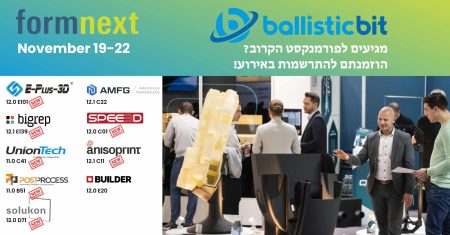Eplus3D and LEAP 71, long-time partners in metal 3D printing and computational engineering, have reached a major milestone with the successful joint production of the world’s largest 3D printed rocket engine — printed as a single part. The benefits of this achievement are numerous.
Pushing the Limits of Design
The engine, which delivers 200 kN of thrust and stands over 1.3 meters tall, was designed by LEAP 71 using its proprietary “Noyron” model. “Noyron” combines engineering knowledge, logic, physics, and manufacturing constraints into an AI-based framework for designing complex machines.
Powered by cryogenic liquid oxygen and kerosene, the engine is a significantly more powerful version of the previously launched “Noyron TKL-5” rocket engine — boasting 40 times the thrust. It integrates components that were once printed separately into a single, robust unit.
The engine was printed in AlSi10Mg aluminum using the Eplus3D EP-M650H metal powder bed fusion (MPBF™) system,
which operates with six 500-watt lasers.

Manufactured at Eplus3D’s Beijing Facility
Josefine Lissner, CEO of LEAP 71, stated:
“LEAP 71’s computational models can design space hardware autonomously without the use of CAD. But limitations of current Additive Manufacturing (AM) processes, including the small build volumes of most industrial 3D printers, have continued to hold us back. I commend Eplus3D for pushing the limits, not only in print size, but also in terms of repeatability of high-quality end results, that exceeded our expectations.”
With a massive build volume of 1600 × 650 × 650 mm, the EP-M650H allowed LEAP 71 to design a fully integrated engine geometry. Eplus3D completed the uninterrupted print in just 354 hours.
Technical Innovation at Its Finest
Conventional rocket engines are typically made from numerous parts that must be assembled and sealed to withstand extreme heat and pressure. The 3D printed engine presented at Formnext consolidates all core components — including the combustion chamber, nozzle, cooling channels, manifolds, and structural parts — into a single unit.
Printed in AlSi10Mg, the engine uses aluminum — a material that presents challenges in propulsion applications due to its low melting point and high reactivity with oxygen.
A dual heat management strategy was implemented: cryogenic oxygen is used for regenerative cooling of the combustion chamber, while kerosene cools the upper nozzle section. A 60-micron layer thickness was selected to minimize roughness in the cooling channels, reducing pressure loss from friction.
200 kN Thruster
A Breakthrough in Aerospace with Metal 3D Printing
The production of this engine demonstrates Eplus3D‘s capabilities in 3D printing large and complex parts using metal. It also highlights the company’s extensive expertise in research and process development.
Through precise tuning of print parameters optimized for high-performance materials, Eplus3D achieved exceptional dimensional accuracy and surface quality — meeting the engine’s quality requirements without the need for additional finishing.
This achievement marks a significant milestone in the advancement of 3D printing technology, particularly for the aerospace industry. The collaboration between LEAP 71 and Eplus3D showcases the power of computational engineering in designing highly integrated machines with complex geometries — made possible only through additive manufacturing. This breakthrough in integrating design and production not only accelerates the development of advanced aerospace components but also unlocks innovative opportunities across a wide range of industries.
We invite you to explore how this groundbreaking technology can enhance and streamline your production processes.




